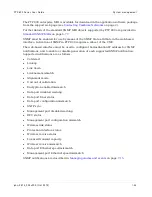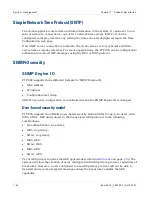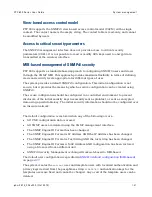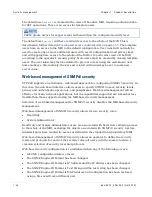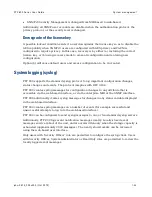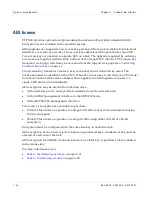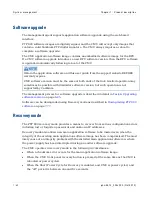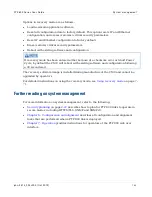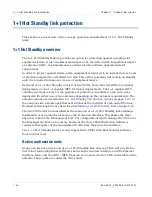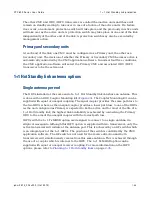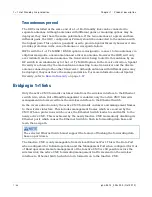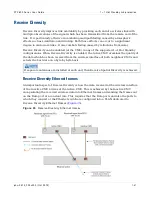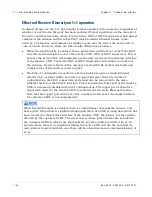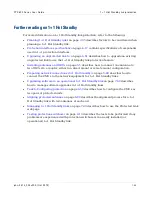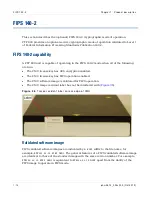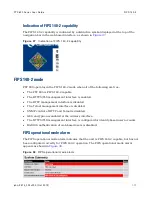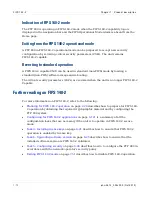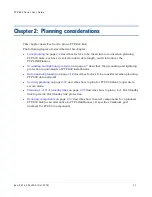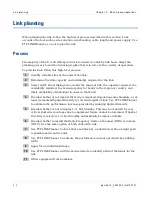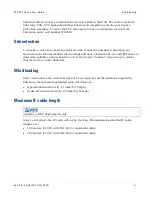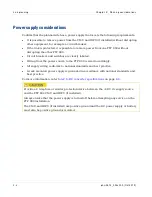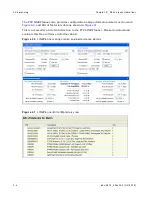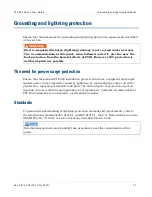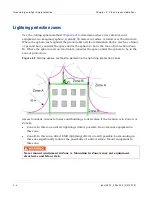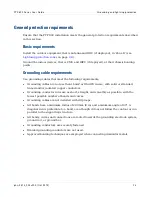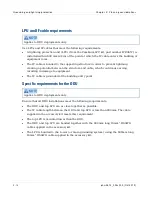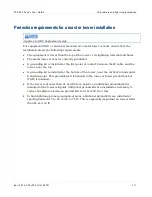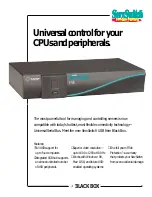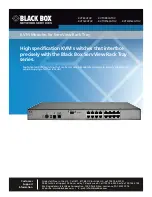
1+ 1 Hot St andby link prot ect ion
Chapt er 1: Product descript ion
1- 68
phn- 2513_004v000 ( Oct 2012)
Effects of Receive Diversity on 1+1 operation
In almost all aspects, the 1+1 Hot Standby feature operates in the same way regardless of
whether or not Receive Diversity has been enabled. Of most significance is the concept of
the Active and Inactive units, where it is the Active ODU or IRFU transceiver which always
radiates at the antenna and the Active CMU which forwards Ethernet frames to the
network. The Inactive unit remains on standby to take over the role of the Active unit in
case of a fault. However, there are some subtle differences as follows:
•
When Receive Diversity is enabled, then a protection switch will not occur if the fault
only affects the wireless receiver of the Active CMU, ODU or IRFU transceiver. This is
because the Active CMU will seamlessly use the data received at the wireless interface
of the Inactive CMU. The Active ODU or IRFU transceiver will continue to radiate at
the antenna. Receiver faults in this category are the RFU Rx Synthesizer faults and
complete loss of the wireless receive signal.
•
The Fiber-Y configuration is useful in a network which requires a single Ethernet
interface for customer traffic. In order to support Receiver Diversity in Fiber-Y
configurations, the CMU copper data ports must also be connected to the same
Ethernet Switch as the Fiber-Y interface. This is because the Fiber port of the Inactive
CMU is necessarily disabled in Fiber-Y configurations. The copper port is therefore
required in order for the Inactive CMU to send Receive Diversity Ethernet Frames.
Note that the copper port will never carry customer traffic hence the single interface
for customer traffic is not compromised.
When Receive Diversity is enabled, there is a small impact on maximum Latency, and
hence jitter. When there is significant fading and the Active CMU is using data which has
been received at the wireless interface of the Inactive CMU, the latency increase will be
affected by the customer traffic. The worst case is where jumbo frames are included in
the customer traffic in which case the maximum increase in latency will be 150
μ
s. In
periods where there is no significant fading, the Active CMU will use the data from its
own wireless receiver in which case there will be a fixed increase in maximum latency of
12
μ
s.
Summary of Contents for PTP 800 Series
Page 1: ...Cambium PTP 800 Series User Guide System Release 800 05 02 ...
Page 40: ...Licensing requirements About This User Guide 10 phn 2513_004v000 Oct 2012 ...
Page 232: ...Limit of liability Chapter 3 Legal information 3 22 phn 2513_004v000 Oct 2012 ...
Page 322: ...Radiation hazard assessm ent Chapter 4 Reference information 4 90 phn 2513_004v000 Oct 2012 ...
Page 428: ...Replacing IRFU components Chapter 5 Installation 5 106 phn 2513_004v000 Oct 2012 ...
Page 630: ...Using recovery mode Chapter 7 Operation 7 78 phn 2513_004v000 Oct 2012 ...


